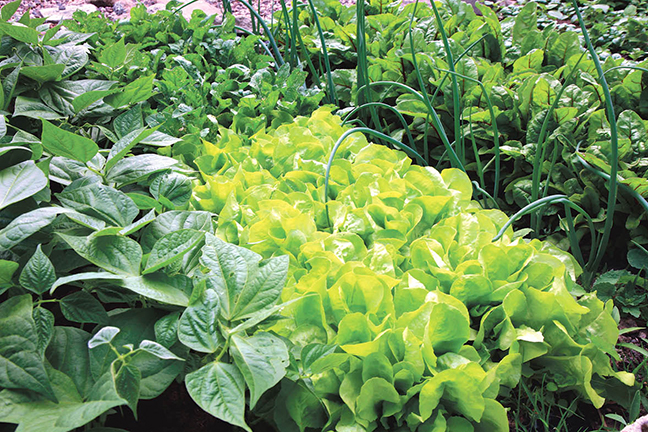
Permaculture: A Way to Live
You may have heard the term “permaculture” being flung around lately in the gardening/landscaping community. It’s a practice taking root across America, from the rural countryside to urban farms. It comes from the phrase “permanent agriculture,” which is based on sustaining the farm in a permanent, ecological process that produces food for both people and animals indefinitely.
Permaculture, as with many ecological principles, can be traced back to Indigenous peoples and their practice of collaborating and living with nature. The Iroquois Nation and other Indigenous peoples had the Seventh Generation Rule which stated that today’s decisions can impact the next seven generations. This can help us define sustainability to mean meeting the needs of the present without compromising the ability of future generations to meet their own needs.
Permanent agriculture first entered the modern age in the first half of the 20th century, with farmers starting to use trees and shrubs that provided fruit and nuts as a food crop for both people and animals. They also started to plant other crops among the trees and shrubs, creating an early form of ecological planting system.
As time went on, this new type of “natural farming” began to spread. The term “permaculture” entered the scene in the 1960s in academia and was defined as a philosophy of working with, rather than against, nature. By the 1980s the term expanded its definition and evolved into “sustainable human habitats,” or “holistic gardening.”
Today, we can define permaculture as a series of principles designed to protect the earth and us. It includes patterns in the landscape that can provide maximum benefit while minimizing waste, labor, and energy.
These patterns make the landscape easier to maintain and harvest than a typical garden or farmstead. In fact, there are a couple of small farms that use this method in the region. With some luck, I will be designing a project soon as a permaculture homestead.
How? If you have read my articles from early on, you will know that one of the most important items in designing a landscape is site inventory and analysis, or “reading your landscape,” as I call it.
After taking inventory and reviewing the site, I will create an existing conditions plan upon which the conceptual design will start to take shape. I will also take into account the clients’ requirements and vision for the property. A larger property may include numerous types of food producing plants, both agricultural varieties and native plants. However, you may want to consider a forest food patch for smaller spaces.
A forest food patch resembles the layers of a typical forest: canopy, understory, shrub layer, and ground plane. For example, plant some nut-bearing trees as part of the canopy layer, like hickories or oaks. (Yes, acorns are edible and some even give chestnuts a run for their money.) Persimmon or pawpaw can be included in the understory layer. Definitely try lowbush blueberry as part of the shrub layer. Raspberries and blackberries are good in this location too. For the ground plane, edible herbaceous plants can fill in the space; even lettuces can be used here and they grow quickly from seed.
It may take some trial and error to get your permaculture established as certain plants play better with some species than others. However, proper planning and research should help alleviate most issues. A master plan always helps to organize and prioritize the garden.
I hope this piqued your interest in permaculture. There is a lot of information available on the subject in books and online, as well as online classes.
A final thought, consider what actions you take now and how they will impact the seventh generation from now. Maybe we all should start living by this prescient rule and live with nature, especially since our food, water, and habitat all reside within it.
Stay safe, and let’s garden together. ▼
Eric W. Wahl is a landscape architect at Pennoni Associates, and the president of the Delaware Native Plant Society.
